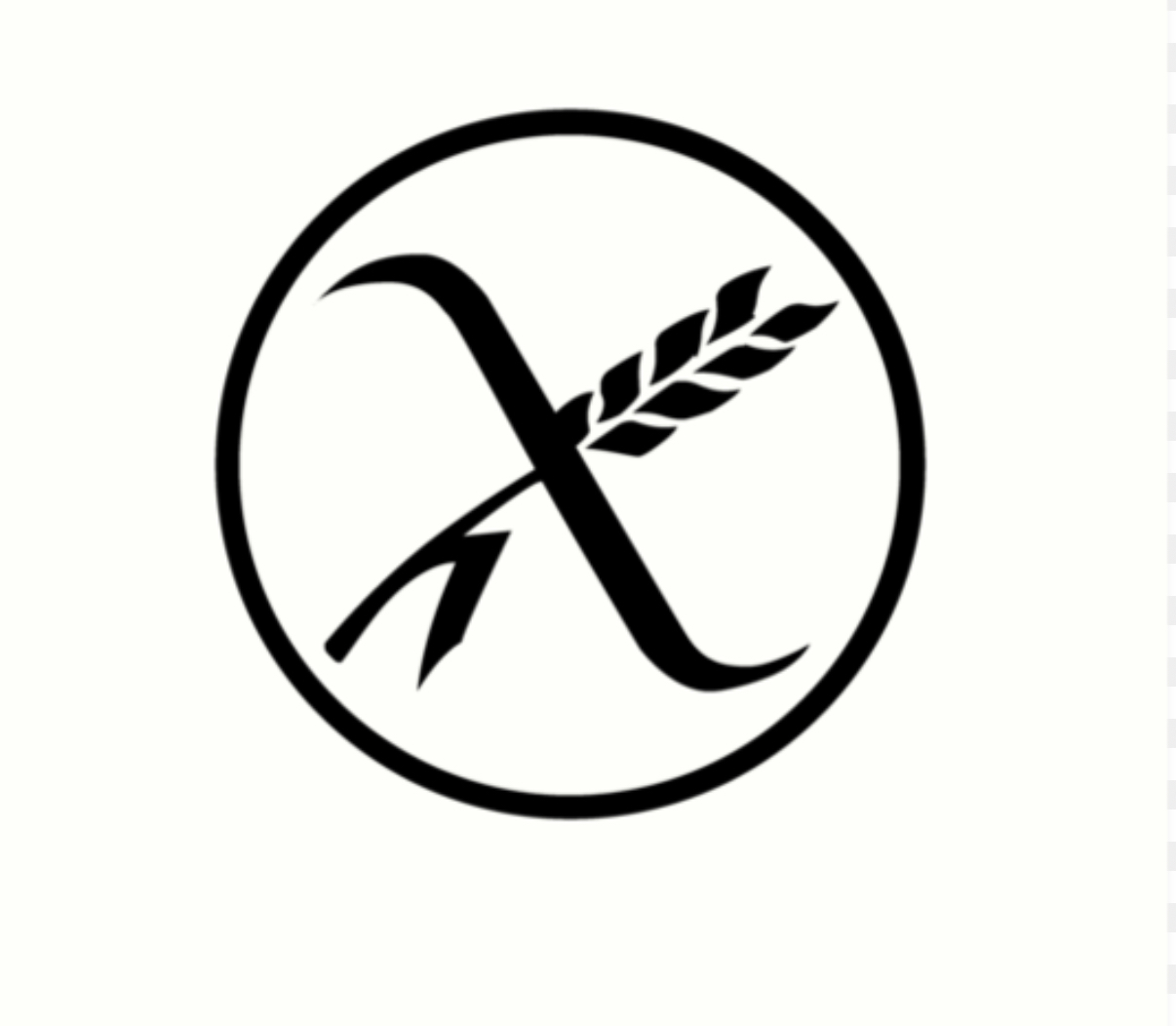Perché sempre più persone sono intolleranti o sensibili al glutine?
-
- Dal 1974 il grano fu irradiato con raggi gamma per aumentarne la produttività, a discapito della salute;
- La raffinazione e la sbiancatura del grano hanno ridotto ulteriormente la qualità;
- Il glutine fu aggiunto per facilitare la produzione tecnologica.
Dove si trova il glutine? Questa proteina si trova naturalmente nei cereali, la forma attiva in:
* Grano o frumento
* Farro (antico) / spelta
* Segale
* Orzo
* Farro verde
* Farro monococco
* Farro dicocco
* Kamut
* Triticale
E in tutti i prodotti che ne derivano come malto, seitan (puro glutine di grano), couscous, bulgur, pizza, biscotti, merendine, focaccia, pane, pasta, tutti i tipi di malto.
L’avena invece presenta un 5-15% di avenina, una proteina simile a quella presente nel frumento, orzo, segale, non adatta ai celiaci. Ma, attenzione!, essa possiede una struttura di amminoacidi molto diversa e quindi meglio digeribile. La reazione del corpo a questo cereale è quindi molto soggettiva ed è necessario testare la tolleranza, introducendola a poco a poco dopo una ripresa al 100%. Una certa qualità di avena in commercio è certificata senza glutine (senza contaminazione incrociata, < 20ppm). Esistono soggetti che sono sensibili all’avena, altri no. Comunque mai oltrepassare i 100g al giorno.
Quelli a basso contenuto di glutine rimangono l’orzo e il farro. Mentre quelli con una qualità migliore di glutine sono i grani antichi (che non hanno subito nessun tipo di mutazione e la qualità del glutine è migliore del grano moderno) come Senatore Cappelli, Tumminia siciliana, Timilia, Russello, Perciasacchi, Margherito.
La qualità della proteina attiva (glutine) è migliorata con:
-
- Una fermentazione naturale che la rende più digeribile;
- Una macinatura a pietra;
- Una masticazione lenta.
La dottoressa Maria Rosa Di Fazio, il dottor David Perlmutter, il dottor Alessio Fasano sostengono un’alimentazione senza glutine. Anche il dottor Franco Berrino, nel suo libro “il cibo dell’uomo”, dice che un eccesso di glutine non è consigliabile.
I danni del glutine “moderno” sulla nostra salute sono evidenti, senza per forza essere celiaci. Il glutine provoca, per esempio, l’LGS (Leaking Gut Syndrome), la sindrome della permeabilità intestinale, la quale permette il passaggio nel corpo di sostanze tossiche, di batteri o di virus.
I cereali senza questo tipo di proteina, generalizzata come glutine, sono il miglio, il sorgo, il grano saraceno, la quinoa, il tiff, l’amaranto, il riso e il mais.
FR, DE, EN:
FR:
Pourquoi de plus en plus de personnes sont-elles intolérantes ou sensibles au gluten ?
1. Dès 1974, le blé a été irradié aux rayons gamma pour augmenter la productivité, au détriment de la santé ;
2. L’affinage et le blanchiment du blé ont ultérieurement réduit sa qualité ;
3. Le gluten a été ajouté pour faciliter la production technologique.
Où est-ce qu’on trouve le gluten? Cette protéine est naturellement présente dans les céréales, la proteine active est dans:
* Blé
* Épeautre (pur)
* Seigle
* Orge
* Épeautre vert
* Engrain
* Amidonnier
* Kamut
* Triticale
Et dans tous les produits qui en résultent comme le malt, le seitan (gluten de blé pur), le couscous, le bulgur, la pizza, les biscuits, les snacks, la focaccia, le pain, les pâtes, tous types de malt.
L’avoine, par contre, contient de 5 à 15 % d’avénine, une protéine semblable à celle présente dans le blé, l’orge, le seigle, qui ne convient pas à la maladie coeliaque. Mais, attention!, elle a une structure d’acides aminés très différente et elle est donc plus digeste. La réaction de l’organisme à cette céréale est donc très subjective et il est donc nécessaire de tester sa tolérance en l’introduisant peu à peu que après une récupération à 100%. Une certaine qualité d’avoine sur le marché est certifiée sans gluten (pas de contamination croisée, < 20ppm). Il y a des sujets qui sont sensibles à l’avoine, d’autres qui ne le sont pas. Cependant, ne dépassez jamais 100g par jour.
Ceux à faible teneur en gluten restent l’orge et l’épeautre. Tandis que ceux qui ont une meilleure qualité de gluten sont les grains anciens (qui n’ont subi aucun type de mutation et la qualité du gluten est meilleure que le blé moderne) tels que Senatore Cappelli, Tumminia Siciliana, Timilia, Russello, Perciasacchi, Margherito.
La qualité de la protéine active (gluten) est améliorée avec :
1. Une fermentation naturelle qui la rend plus digeste;
2. Un meulage en pierre;
3. Mâcher lentement.
Les docteurs Maria Rosa Di Fazio, David Perlmutter, Alessio Fasano soutiennent un régime sans gluten. Même le Dr. Franco Berrino, dans son livre “Il cibo dell’uomo”, dit qu’un excès de gluten n’est pas conseillé.
Les dommages du gluten “moderne” sur notre santé sont évidents, sans pour autant être cœliaque. Le gluten provoque, par exemple, le LGS (Leaking Gut Syndrome), le syndrome de perméabilité intestinale, qui permet le passage dans l’organisme de substances toxiques, bactéries ou virus.
Les céréales sans ce type de protéine, généralisées comme le gluten, sont le millet, le sorgho, le sarrasin, le quinoa, le tiff, l’amarante, le riz et le maïs.
DE:
Warum sind immer mehr Menschen intolerant oder empfindlich gegenüber Gluten?
1. Seit 1974 wird Weizen mit Gammastrahlen bestrahlt, um die Produktivität zum Nachteil der Gesundheit zu steigern;
2. Die Weizenveredelung und Bleiche haben ihre Qualität weiter verschlechtert;
3. Gluten wurde hinzugefügt, um die technologische Produktion zu erleichtern.
Wo ist Gluten enthalten? Dieses Protein kommt natürlich in Getreide vor, die aktive Form in:
* Weizen
* (Ur-) Dinkel
* Roggen
* Gerste
* Grünkern
* Einkorn
* Emmer
* Kamut
* Triticale
Und alle daraus hergestellte Produkte wie Seitan (reines Weizengluten), Couscous, Bulgur, Pizza, Kekse, Snacks, Focaccia, Brot, Pasta, alle Arten von Malz.
Hafer hingegen hat 5-15% Avein, ein Protein, das dem in Weizen, Gerste, Roggen ähnlich ist und nicht für Zöliakie geeignet ist. Aber, Vorsicht!, Avein hat eine ganz andere Aminosäurenstruktur und ist daher besser verdaulich. Die Reaktion des Körpers auf dieses Getreide/Eiweiss ist daher sehr subjektiv und es ist notwendig, die Toleranz zu testen und sie nur nach einer 100%igen Erholung nach einzuführen. Eine bestimmte Haferqualität auf dem Markt ist glutenfrei zertifiziert (keine Kreuzkontamination, < 20ppm). Es gibt Menschen, die empfindlich auf Hafer reagieren, andere, die es nicht sind. Überschreiten Sie jedoch niemals 100 g pro Tag.
Diejenigen mit niedrigem Glutengehalt bleiben Gerste und Dinkel. Während diejenigen mit einer besseren Glutenqualität sind die alten Körner, die geblieben sind weitgehend unverändert seit Tausenden von Jahren, die keiner Mutation unterzogen wurden und die Glutenqualität besser ist als moderner Körner), wie Senatore Cappelli, Tumminia Siciliana, Timilia, Russello, Perciasacchi, Margherito.
Die Qualität des aktiven Proteins (Gluten) wird dadurch verbessert:
1. Eine natürliche Gärung, die Gluten bekömmlicher macht;
2. Ein Steinschleifen;
3. Langsames Kauen.
Dr. Maria Rosa Di Fazio, Dr. David Perlmutter, Dr. Alessio Fasano unterstützen eine glutenfreie Ernährung. Selbst Dr. Franco Berrino sagt in seinem Buch “Il cibo dell’uomo”, ein Mengenüberschuß an Gluten ist nicht zu empfehlen.
Der Schaden des “modernen” Glutens an unserer Gesundheit ist offensichtlich, ohne unbedingt zöliakisch zu sein. Gluten verursacht z.B. das LGS (Leaking Gut Syndrome), das Syndrom der Darmdurchlässigkeit, das den Durchgang von toxischen Substanzen, Bakterien oder Viren im Körper ermöglicht.
Getreide ohne diese Art von Protein, verallgemeinert als Gluten, sind Hirse, Sorghum, Buchweizen, Quinoa, Tiff, Amaranth, Reis und Mais.
EN:
Why are more and more people intolerant or sensitive to gluten?
1. Since 1974, wheat has been irradiated with gamma rays to increase productivity, to the detriment of health;
2. Wheat refining and bleaching have further reduced quality;
3. Gluten was added to facilitate technological production.
Where is gluten? This protein is naturally found in cereals, the active form in:
* Wheat
* Spelt
* Rye
* Barley
* Unripe spelt grians
* Einkorn
* Emmer
* Kamut
* Triticale
And in all the resulting products as seitan (pure wheat gluten), couscous, bulgur, pizza, biscuits, snacks, focaccia, bread, pasta, all types of malt.
Oats, on the other hand, have 5-15% of avenin, a protein similar to that present in wheat, barley, rye, not suitable for celiac disease. But be careful, it has a very different amino acid structure and is therefore better digestible. The reaction of the body to this cereal is therefore very subjective and it is necessary to test the tolerance, introducing it little by little after a 100% recovery. A certain quality of oats on the market is certified gluten-free (no cross-contamination, < 20ppm). There are subjects who are sensitive to oats, others who are not. However, never exceed 100g per day.
Those with low gluten content remain barley and spelt. While those with a better quality of gluten are the ancient grains (which have not undergone any kind of mutation and the quality of gluten is better than modern wheat) such as Senatore Cappelli, Tumminia Siciliana, Timilia, Russello, Perciasacchi, Margherito.
The quality of the active protein (gluten) is improved with:
1. A natural fermentation that makes it more digestible;
2. A stone grinding;
3. Slow chewing.
Dr. Maria Rosa Di Fazio, Dr. David Perlmutter, Dr. Alessio Fasano support a gluten-free diet. Even Dr Franco Berrino, in his book “Il cibo dell’uomo”, says an excess of gluten is not recommended.
The damage of “modern” gluten on our health is evident, without necessarily being celiac. Gluten causes, for example, the LGS (leaking gut syndrome), the syndrome of intestinal permeability, which allows the passage in the body of toxic substances, bacteria or viruses.
Cereals without this type of protein, generalized as gluten, are millet, sorghum, buckwheat, quinoa, tiff, amaranth, rice and corn.

